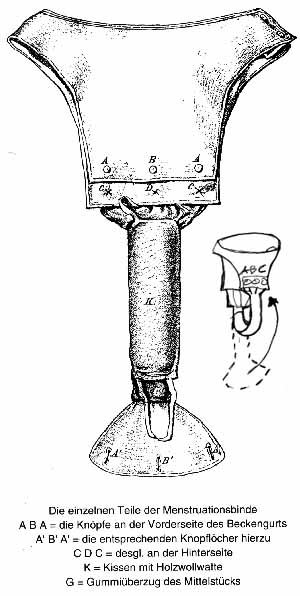Yesterday, while reading my issue of Redbook, I saw this ad. Lunada has created plastic, reusable menstrual cups; a very simple concept, according to them. It consists of inserting with your fingers a plastic barrier into the vagina. This barrier, or cup, catches the menstrual flow. Then you remove the cup with your fingers, dispose of the blood, and wash the plastic cups for re-use. Don't forget to wash your hands, of course.
Here's how, in detail, from their website:
What Lunette is about, from their official website
I wonder why the information says to keep Lunette away from children and pets, but then adds especially [pet] rodents. Why are rodents a special category? Maybe they carry some sort of disease.
This made me think this is probably the way our ancestors managed menstruation: they probably washed and re-used cloths or something similar. I was wrong. I thank the site MUM.ORG, for offering information about recyclable ways in which ancestors managed menstrual bleeding (meaning: washing and re-using special underwear and other gadgets). However, I was amazed to discover that most women used nothing. They just allowed the blood to... well.... flow....
Just to let you know, here is one example of early attempts to create pads for women:
Drawing of a proposed washable German belt and pad, 1894 (from Livius Fürst, Die Hygiene der Menstruation in normalem
und krankhaftem Zustandeund krankhaftem Zustande [The Hygiene of Menstruation in the Normal and Diseased State; Leipzig, Germany, 1894]

According to one source, in the 19th century most German women either made their menstrual pads or used nothing at all! Tampons, available in the U.S.A. in the early 1930s, seem to have appeared later in Europe (o.b. started after World War II).Below is a drawing of a belt and pad proposed by a German writer and gynecologist, Dr. Livius Fürst, in 1894. In the small drawing to the right of the pad I show how the flap pulls up and buttons on the front of the belt. He suggests using cotton as the filler for the pad.Disposable Kotex did not appear until 1920's. .Source: mum.org At first, Kotex was sewer safe, but I guess that after trillions of pads were flushed down household toilets, they became a problem. So, these days you toss them in the trash after wrapping them in toilet paper. Which is also a problem, because of the environmental cost caused by so much garbage in general. Just by reading the information from the Lunette website, I can think of a word: MESSY. Just picturing myself removing the cup from my vagina and pouring the contents in the toilet makes me not want to buy Lunette. However, I was born in the era where we still had cloth diapers and those were messy as well, especially when babies had diarrhea. Disposable diapers may be cleaner for the household, but they are awful for the environment. I guess it just depends how committed to our planet we are. I have known some parents who are conscious enough to go back to cloth diapers. How eco-conscious are you to go back to re-usable menstrual management devices? |
No comments:
Post a Comment